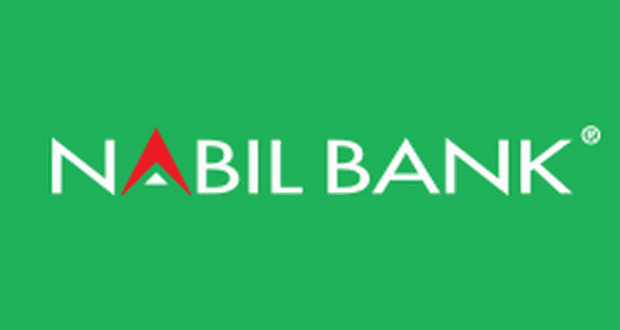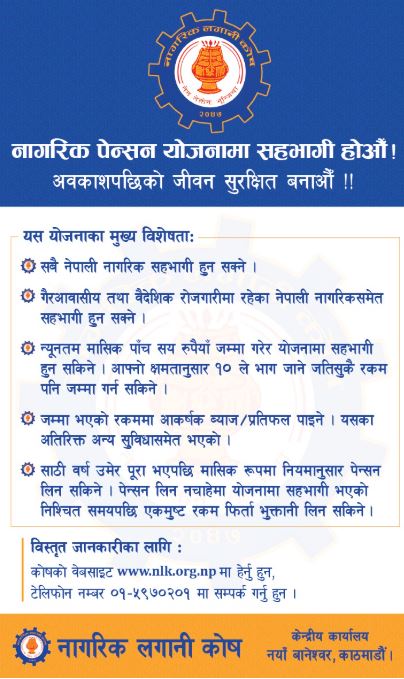Content
On the other hand, permissionless blockchain gives all users pseudo-anonymous access to the blockchain network. Are encrypted to prevent the identity of stakeholders and other critical information from being revealed to all users. This allows users to stay anonymous without the transactions being hidden.
When building an enterprise blockchain application, it’s important to have a comprehensive security strategy that uses cybersecurity frameworks, assurance services and best practices to reduce risks against attacks and fraud. 4 Blockchain builds trust Blockchain creates trust because it represents a shared record of the truth. Data that everyone can believe in will help power other new technologies that dramatically increase efficiency, transparency and confidence.
- That being said, these are still the early days of cryptocurrency and blockchain technologies, and many loose ends are up in the air.
- Today, we see a proliferation of NFTs and the tokenization of assets.
- IBM Institute for Business Value maintain that blockchain adoption is accelerating faster than originally anticipated.
- Often, this information is handled in house or passed through a third party like brokers, bankers, or lawyers increasing time, cost, or both on the business.
- By storing data across its peer-to-peer network, the blockchain eliminates some risks that come with data being held centrally.
- Moreover, the software applications must be heavily backed by robust security specifically designed to manage the movement of digital information from one point to another.
Although blockchain can save users money on transaction fees, the technology is far from free. For example, the PoW system which the bitcoin network uses to validate transactions, consumes vast amounts of computational power. In the real world, the power from the millions of computers on the bitcoin network is close to what Norway and Ukraine consume annually. This gives auditors the ability to review cryptocurrencies like Bitcoin for security. This also means that there is no real authority on who controls Bitcoin’s code or how it is edited.
The control and security of the database remains with a designated authority. If the authority is compromised, the recorded data can be manipulated. Although the performance is much faster with lower latency among fewer nodes, traditional databases suffer from the risks of centralized control or a single point of failure. In that regard, many businesses plan to implement private blockchains to keep information from being seen by the public.
Disruptive or Foundational Technology
Blockchain has three components that contribute to the functioning of this technology, and these three components are Blocks, hash, and nodes. In this article, we will discuss blockchain basics and the latest advancements in the technology. We’ll see how it works, the fundamentals behind this technology, its types, and much more.
Each block on the blockchain contains its own unique hash, along with the unique hash of the block before it. When the information on a block is edited in any way, that block’s hash code changes—however, the hash code on the block after it would not. This discrepancy makes it extremely difficult for information on the blockchain to be changed without notice. Perhaps no industry stands to benefit from integrating blockchain into its business operations more than banking. Financial institutions only operate during business hours, usually five days a week.
Although most of blockchain implementation are decentralized and distributed, Oracle launched a centralized blockchain table feature in Oracle 21c database. The Blockchain Table in Oracle 21c database is a centralized blockchain which provide immutable feature. Compared https://globalcloudteam.com/ to decentralized blockchains, centralized blockchains normally can provide a higher throughput and lower latency of transactions than consensus-based distributed blockchains. Blockchains use various time-stamping schemes, such as proof-of-work, to serialize changes.
Blockchain for data sharing.Blockchain could act as an intermediary to securely store and move enterprise data among industries. Quantum computing has lots of potential for high compute applications. A protocol similar to blockchain was first proposed in a 1982 dissertation by David Chaum, an American computer scientist and cryptographer. Users have to keep track of their private keys to avoid losing their money. Proof of Stake , algorithms that are commonly used as alternatives to PoW.
These people often earn a little money that is paid in physical cash. They then need to store this physical cash in hidden locations in their homes or other places of living, leaving them subject to robbery or unnecessary violence. Keys to a bitcoin wallet can be stored on a piece of paper, a cheap cell phone, or even memorized if necessary.
Public Blockchains
Thanks to reliability, transparency, traceability of records, and information immutability, blockchains facilitate collaboration in a way that differs both from the traditional use of contracts and from relational norms. Contrary to contracts, blockchains do not directly rely on the legal system to enforce agreements. In addition, contrary to the use of relational norms, blockchains do not require a trust or direct connections between collaborators. Opponents say that permissioned systems resemble traditional corporate databases, not supporting decentralized data verification, and that such systems are not hardened against operator tampering and revision.
A study by Galaxy Digital suggests Bitcoin energy consumption is less than half that of the traditional banking system. If anything, you could argue that Bitcoin is a step in the right direction for the environment. In 2013, after traveling, meeting with bitcoin developers, and discovering Bitcoin’s limitations, Vitlaik Buterin decided to improve upon the Bitcoin blockchain and built Ethereum. PoS still uses cryptographic algorithms for validation, but transactions get validated by a chosen validator based on how many coins they hold, also known as their stake. The first blockchain-like protocol was proposed by cryptographer David Chaum in 1982.
Blockchain networks like Bitcoin use a lot of electricity to validate transactions, leading to environmental concerns. For example, Bitcoin consumes more electricity than a small, medium-sized European country, and Bitcoin mining is threatening China’s climate change goals. Security is the ability of a blockchain to be protected from attacks. Unfortunately, exchanges and source code have been hacked on many occasions, suggesting that many developers focus on scalability and decentralization at the expense of security.
Speed and Data Inefficiency
The most notable disrupter is Japan, which has passed a law accepting bitcoin as legal tender. At the other end of the spectrum, Bangladesh passed a law in 2014 stating that anybody caught using the virtual currency could be jailed under the country’s strict anti-money-laundering laws. After reviewing all of the case materials, prosecutors concluded it actually would have been easier for the Silk Road criminals to conceal their assets in the traditional financial system. Accelerate cross-border payments, intercompany financials, purchasing contracts and SLAs, royalties tracking, and distribution. Visauses Blockchain to deal with business to business payment services.
But there are also investment strategies that are unique to the blockchain and cryptocurrencies, like yield farming. In some ways, the process of investing in shares and cryptocurrencies is the same. First, you can buy cryptocurrencies on exchanges like you can buy shares through an online broker. ETFs are a basket of securities that track an asset or index you can buy or sell on an exchange throughout the day.
This central authority has the power to grant or deny access for nodes to join the network. It can also grant varying rights to different nodes for performing various functions. The two main types of blockchain are permissioned and permissionless. All other types of blockchain fall under one of these two primary types. Blocks are further secured as they contain their hash value and timestamp, as well as the block’s hash value chronologically before them.
Blockchain.
The immutability of the ledger means you can always trust it to be accurate. Or one where you store money in an online wallet not tied to a bank, meaning you are your own bank and have complete control over your money. You don’t need a bank’s permission to access or move it, and never have to worry about a third party taking it away, or a government’s economic policy manipulating it.
In this article, you learn how to answer the question, “what is blockchain technology? ” You’ll also learn how blockchain works, why it’s important, and how you can use this field to advance your career. At Thomson Reuters, we have developed an ecosystem of blockchain partnership with hundreds of entrepreneurs and start-ups as well as with key industry organizations. Financial professionals were initially more interested in the ledger technology underlying cryptocurrency, than the currency itself.
Due to the nature of blockchain, permissionless networks are more secure than permissioned ones. This is because they have more nodes to validate every transaction, reducing the chances of bad faith manipulation by colluding users. However, such networks often feature longer transaction processing durations. Accessing the network and control the network rights of nodes that are a part of the blockchain. All users on a permissioned blockchain network share their identities. For instance, blockchain and cryptography leverage public and private keys, and users losing access to their private keys will face operational challenges.
Because of this, anyone can suggest changes or upgrades to the system. If a majority of the network users agree that the new version of the code with the upgrade is sound and worthwhile, then Bitcoin can be updated. Currently, tens of thousands of projects are looking to implement blockchains in a variety of ways to help society other than just recording transactions—for example, as a way to vote securely in democratic elections. The nature of blockchain’s immutability means that fraudulent voting would become far more difficult to occur. For example, a voting system could work such that each citizen of a country would be issued a single cryptocurrency or token. Each candidate would then be given a specific wallet address, and the voters would send their token or crypto to the address of whichever candidate for whom they wish to vote.
Banking the Unbanked
For example, a permissioned blockchain could manage health care records or track a product’s supply chain. A blockchain transaction is a digital record of an exchange between two parties. The transaction is stored on the Blockchain, a shared ledger of all transactions. And because everything is embedded in digital code, intermediaries like lawyers, brokers and bankers might no longer be necessary. If you compare blockchain with traditional databases, the main difference revolves around the number of nodes and the performance. Traditional databases like RDBMS and replicated databases are centralized within a proprietary infrastructure.
Blockchain also has potential applications far beyond bitcoin and cryptocurrency.
Digital assets are decentralized, allowing for real-time accessibility, transparency and governance amongst more than one party. The journal encourages authors to digitally sign a file hash of submitted papers, which are then timestamped into the bitcoin blockchain. Authors are also asked to include a personal bitcoin address on the first page of their papers for non-repudiation purposes.
The “block” in a blockchain refers to a block of transactions that has been broadcast to the network. When a new block of transactions is validated by the network, it is attached to the end of an existing chain. This chain of blocks why blockchain is important is an ever-growing list, or ledger, of transactions that the network has validated. We call this single, agreed-upon history of transactions a blockchain. When cloud computing first came out, it was an emerging technology.
Are you ready for blockchain?
Explore the different types of Blockchain platforms available for your application. There are many types of Blockchain, each with its strengths and weaknesses. Find out if there’s already an existing blockchain for your purpose.














